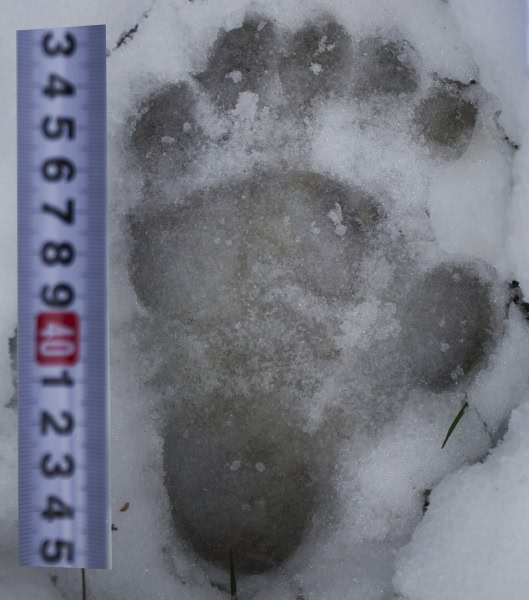Footprints left by giant pandas in the wild can be used to identify the individual panda that made them and determine its sex, a new Duke University-led study by an international team of conservation scientists shows.
The new identification technique uses an interactive software tool called ConservationFIT to ‘read’ and analyze digital images of footprints, which are submitted electronically to a global database for matching.
Field tests show that the technique accurately identified individual animals and their gender more than 90 percent of the time.
This accuracy, combined with the system’s ease of use in the field ‘ a smartphone and a ruler are all you need to collect and submit images ‘ makes it particularly well suited for studying a species as elusive as the giant panda, said Binbin Li, assistant professor of environmental sciences at Duke Kunshan University, who led the study.

A Panda Cub Showing Foot. (Photo: Binbin Li)
‘Giant pandas live in remote and hard-to-reach areas and their population density is so low that actual sightings of pandas themselves are not common. What we do see a lot of are footprints and fecal droppings,’ said Li, who holds a secondary faculty appointment at Duke University’s Nicholas School of the Environment.
Identifying individual animals based on a DNA analysis of their fecal droppings provides accurate results, she said, but is costly and requires very fresh samples and sophisticated laboratory equipment. Trying to identify an panda using estimates of its bite size ‘ based on the average length of bamboo fragments found in its droppings ‘ is less technical but not very precise since many pandas within the same mating cluster may have similar bites.

A Panda Footprint. (Photo: Binbin Li)
Footprints, on the other hand, are like fingerprints. Each one is different.
‘Each species has a unique foot structure and the panda, in particular, has a beautifully complex foot that makes it a perfect candidate for monitoring with ConservationFIT,’ said Zoe Jewell, principal research associate at JMP Software and an adjunct faculty member at Duke’s Nicholas School.
The algorithm-based software is based on a customized statistical model that uses cross-validated discriminant analysis and clustering methodology to ‘read’ a panda’s footprint and identify its distinguishing features. Based on this data, the program can identify the animal’s sex and, pinpoint the identity of the individual panda itself according to the clustering results with known individuals from the database, said Sky Alibhai, who is also a principal research associate at JMP Software and an adjunct faculty member at Duke’s Nicholas School.
The new technique may prove especially useful for monitoring the reintroduction of captive pandas back into the wild, said Zhang Hemin, director of the China Conservation and Research Centre for the Giant Panda, where the field tests were conducted. New filtering and categorizing capabilities being developed with SAS will allow the system to quickly and efficiently process increasing volumes of digital data as wild populations increase, Jewell said.
Because it’s easy to use, and requires minimal training, it will also encourage greater participation by citizen scientists.
The researchers published their peer-reviewed paper DATE HERE in the journal Biological Conservation.
Jewell and Alibhai launched ConservationFIT earlier this year through WildTrack, a nonprofit conservation organization they lead. It runs on JMP software from SAS, a data analytics company based in Cary, North Carolina, and can be customized for use on a wide range of different species and in different terrains.
In addition to giant pandas, it currently is being used to monitor and map populations of three endangered species of big cats: jaguars in the Americas, snow leopards in Asia, and cheetahs in Africa and the Middle East.
Funding for the new study on giant panda identification came from the China Conservation and Research Centre for the Giant Panda (CCRCGP) and the China Scholarship Council.

